Since my desktop replacement laptop (Acer 8930s) started to feel a bit sluggish, I’ve decided to search around for an SSD hard drive. Below you will find a comparison between the same installation of Windows 7 Ultimate, once running on the standard hard disk (shown on the left side of the screen in videos), and the other running on the SSD disk, shown on the right side of the videos.
Introduction
Since I travel a lot and I keep a lot of my paper work on my laptop – I decided a while ago to keep everything encrypted (at least the system partition). I would have liked the way Ubuntu works (encrypted home folders) but … I guess that’s a long way to go.
Anyway, beside this encryption of the whole drive, I also like to keep the development stuff (I’m a Java developer mainly) on a virtual disk (which is a 15Gb big file, mounted as a virtual disk). This means that backup is really easy (just copy the big file somewhere else) and, in case of system reinstall, its very easy to restore everything (just remount the virtual disk). VD includes everything, IDEs, repositiories, JDKs installed, servers, configurations, databases, everything …
However, it felt that the poor laptop is not quite happy with this. Although I have purchased Windows 7 Ultimate and abusing ReadyBoost using an 8Gb (Class 4) SD Card, it still felt sluggish at times, especially when starting up Eclipse / Netbeans, Gimp, and so on.
Configuration
Laptop is an Acer 8930g with Intel Q9000 processor (6Mb cache, 2Ghz, 1066FSB), 4GB DDR3, 9600M GT Video, and a 7200 RPMS WD 320GB hard disk.
The laptop has a secondary hard disk slot as some other models were sold with RAID, but not mine. The model I have also come with ICH9M chipset, without RAID controller.
I’ve decided to buy an Intel X25-M G2 80Gb and install it in the second hard disk slot of the laptop:
I’ve encrypted it too (whole system partition) using TrueCrypt 7.0a – but just before that and below I present some movies on how the system compared with with the same install (also encrypted) but using the standard WD 320Gb hard disk of the laptop.
While running with standard hard disk, I was using ReadyBoost with an 8Gb MicroSD card. After switching to SDD, Windows is now saying that the system is fast enough and it using ReadyBoost does not provide any additional benefits – and thus is disabled, I cannot activate it.
Also, on both setups the Antivirus and Windows Search Service were disabled.
Comparison
I don’t have too much time to edit the movies, I just put them together using PowerDirector 8. I wanted to also add some seconds to count, but I could not figure out how (or if its possible).
- Boot time:
[youtube]http://www.youtube.com/watch?v=6IXeWywyU4g[/youtube] - Compiling Liferay Portal 5.5 :
[youtube]http://www.youtube.com/watch?v=XUX3g_X50Bk[/youtube] - Firefox loading speed:
[youtube]http://www.youtube.com/watch?v=c5ndGr84oFc[/youtube] - HDTach results (I had to run in compatibility mode):
- CrystalDiskMark benchmark (please remember that the disk is encrypted using TrueCrypt)
As a comparison, here’s the benchmark from the standard HDD (unencrypted!) WD3200BEKT-22F3T0
Conclusions
I had some issues with lockups and freezes while installing Windows 7 as well as after. Apparently the issues seemed to go away after installing latest chipset drivers from Intel for ICH9M (at this moment of writing, version 9.6.0).
Also, the system response time has increased. Although before buying everybody online was raving on how fast things got, I have to admit that I expected better results. The most impressive is when applications start up after rebooting. Its very fast. However, having ReadyBoost active, with the old hard disks the times were almost the same once the applications were started. I mean, when first compiling Liferay, it may take 55s / 1m with SSD (and 1m10s , 1m15s with standard hard disk), but only when you compile for the first time. The second compilation took the same on both setups , around 49s.
From my point of view, the system feels snappier now especially when starting up applications – and almost incredible after a reboot. However, since I very rarely reboot the machine, I can’t say I will benefit a lot.
I guess the only real real advantage, is that after hours of working on the laptop, the hands don’t burn that much 🙂 from the heat of the hard disks inside. Now the laptop is MUCH cooler.
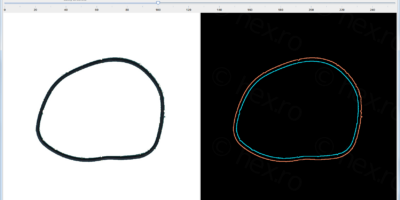

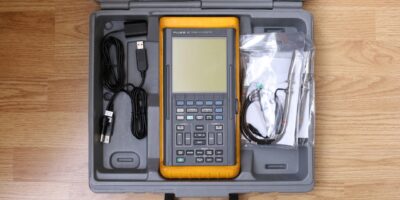
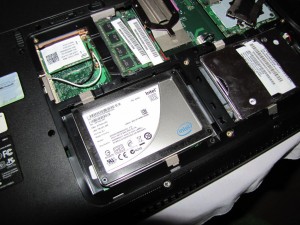
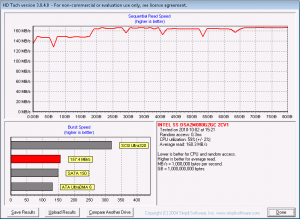

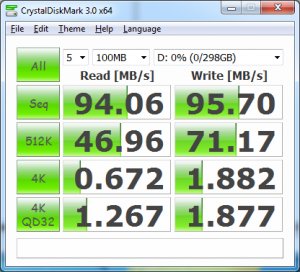
Leave a Reply